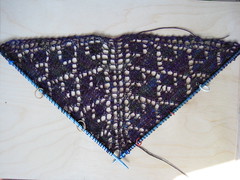Various people have noticed Clive Thompson's New York Times article on Twitter, Facebook, and the ambient social awareness that these kinds of tools promote. He points out a lot of things I find interesting about microblogging, particularly the way small bits of information add up into a new kind of sense of one's friends' lives, "like thousands of dots making a pointillist painting." Also of interest: maintaining multiple levels of intimacy with public and private Twitter accounts; the potential danger of too many "parasocial" relationships with people you don't really know; and the way ambient awareness reproduces the social dynamic of living in a small village, where everyone knows everyone. Definitely worth reading the whole thing.
I've noticed something that may or may not be related. When I started blogging, lo these five years ago, I didn't know anyone else online. If my friends had online presences, I wasn't aware of it. My blog persona was a secret identity, and the people I interacted with on the interwebs were people I'd never met in person. (Parasociality ahoy!) I was a heavy user of e-mail to keep in touch with friends and family in the offline world, but the web, for me, was more for interacting with people I didn't know.
Now I suspect that friends from offline contexts make up a significant percentage of my blog readership; I've also taken to Twitter as another way to keep up with people I already know. In fact, I didn't really get into it until I started finding my existing friends on it. I also finally succumbed and got a Facebook account for the same reason. One of the perks of joining Ravelry was finding knitters in my area to hang out with on Saturday mornings (hi, New London Knit/Crochet folks!). And so on. In short, online life for me now is much more about ambient awareness than it used to be. Have any of the rest of you (friends, colleagues, people I know from the blogosphere but not in person, random passersby) noticed the same thing?

